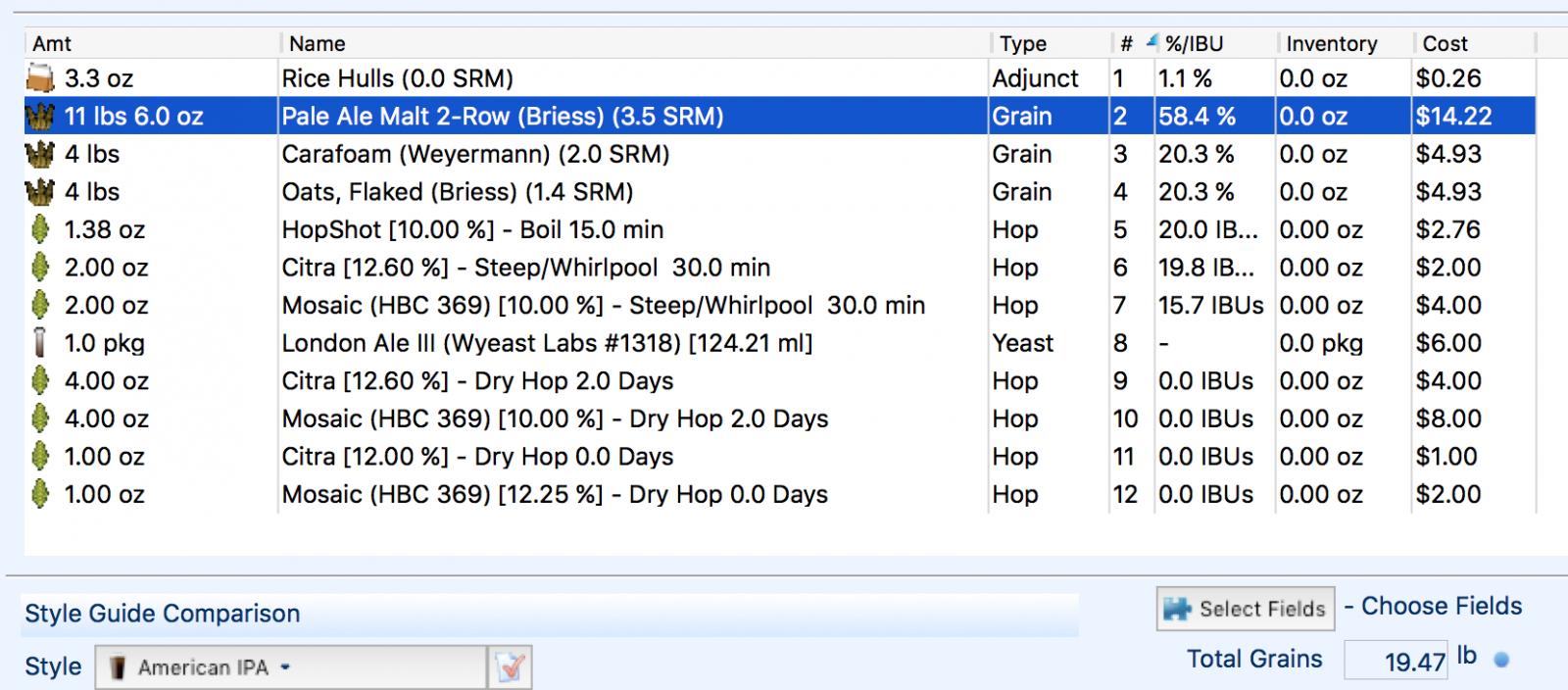Gustatorian
Well-Known Member
- Joined
- Apr 1, 2015
- Messages
- 638
- Reaction score
- 23
Changes to the kettle losses do effect the pre-boil gravity and mash efficiency correctly, just not intuitively.
Like you said, everything is built on the fixed brew house efficiency. That sets the percentage of the sugar from the grain that gets into the fermentor. All of the other (relavent) values are calulated backwards from there to make/force that to happen. This can end up looking suspicious.
Post-boil and fermentor gravities are equal but the volumes may not be. If there are kettle losses you need a greater quantity of the same gravity wort. This means more total points post-boil which means more total points pre-boil Intuitively, to me at least, it seems the extra volume required pre-boil would cancel out the extra points. It probably does as long as the kettle loss is small enough.
For example, say we are supposed to get 5G of 1.050 wort into the fermentor, no kettle loss and we boil off 1G an hour. That is pre-boil 6G @ 1.04166. If we have a kettle loss of .25G, now we need 5.25G @ 1.050(262.5 points) post boil and get 6.25G @ 1.04200 pre-boil. With .5G kettle loss we get 5.5G @ 1.050(275 points) 6.5G @ 1.04230 pre-boil. I added the extra digits to the gravities just to show the subtle differences with the small volume change. It is climbing slowly, but a large enough loss will have a noticable effect.
This is going to flow further upstream. The extra sugar pre-boil is going to come from the mash. If you get more sugar from the mash your mash must have been more efficient.
Post-boil and fermentor gravities can and should be equal. I feel like the software knows this. BeerSmith should also know that the volumes are not equal. It appears that the software does know this because it separates them. Under the volumes tab, we see a separation of total post-boil volume from trub loss and batch volume.
Ok, so not only is it increasing your pre-boil gravity, it IS increasing your mash efficiency. I see that now. And I understand your math below, but why would the software assume that your mash efficiency must be better if youre simply increasing your trub loss? Changing the trub loss in an equipment profile is usually a due to variable documentation on brew day. Inputing that number into the equipment profile and then the software subsequently deciding that your mash efficiency must be better seems more than counterintuitive. It seems like a flaw in the system. Especially when I was under the impression (before all of this) that the only variable that was altering mash efficiency was brewhouse efficiency (which is a flaw in itself). Do you see any benefit for this action of changing the mash efficiency/pre-boil gravity by altering the trub loss?






















![Craft A Brew - Safale S-04 Dry Yeast - Fermentis - English Ale Dry Yeast - For English and American Ales and Hard Apple Ciders - Ingredients for Home Brewing - Beer Making Supplies - [1 Pack]](https://m.media-amazon.com/images/I/41fVGNh6JfL._SL500_.jpg)





































